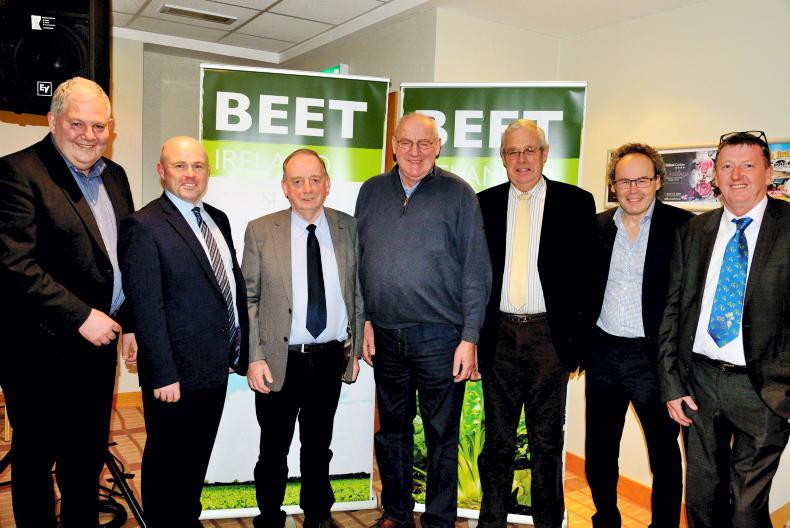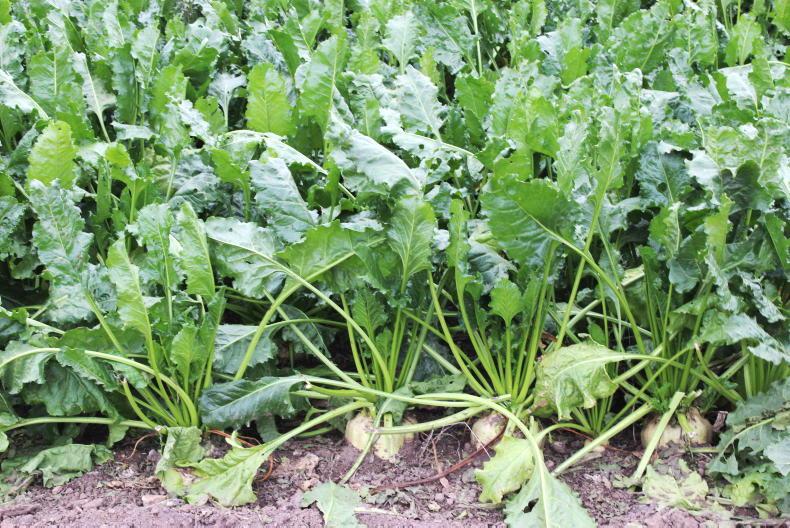History has a terrible habit of repeating itself. If the current proposals on the table from Beet Ireland are delivered upon, this would be the fourth time a sugar beet industry has been started from scratch in this country.
Ireland’s first sugar beet factory dates to the mid-19th century. It was established in Mountmellick, Co Laois. As far back as 1851, a detailed study entitled The Manufacture of Beet-Root Sugar in Ireland argued that our soil, climate and rainfall were ideally suited to the growing of beet, that it was more profitable than other crops as well as being an ideal rotation crop. Most of the same arguments can be made today.
The Mountmellick factory cost £10,000 and employed 160 people. It raised capital of £120,000 with a further facility up to £300,000 – the equivalent of almost €30m today. Two brothers were brought in from Vienna to run it. After teething problems in year one, it fared better in year two but, by year three, farmers didn’t grow enough beet. This led to a shortage in supply, affected production and resulted in a falloff in sales of sugar.
This factory, which opened with great promise and attempted to replace the substantial imports, flourished for a few years, but was dead within a decade. One of the main reasons cited for its failure was the British government’s determination to shelter its own sugar beet industry.
The second attempt was in 1925 after the establishment of the State, when the Government was looking to set up successful industries to support jobs and the young economy. Sugar beet was selected as an ideal crop to grow on an industrial scale and Carlow was chosen as the best location as it sat in a rich tillage area with good rail and waterway connections.
Ireland had little expertise in the growing and processing of sugar beet, so the Irish Government entrusted the development to a Belgian company and, in 1926, the Irish Sugar Manufacturing Company was set up.
However, by 1933, when the economy was in a very depressed state, the future of the Carlow plant was in doubt. The State came in and set up Comhlucht Siúicre Éireann under the Companies Acts to secure its future. It then went on to build factories at Mallow, Thurles and Tuam.
Over the following years, the Irish sugar industry was seen as beneficial to the economy. The Carlow factory was producing 13,000t of sugar per year while the country was also importing 85,000t. By 1936, almost 28,000 farmers were growing 500,000t of sugar beet in 22 counties nationwide.
By 1945, cut off from sugar supplies during the Second World War, imports had declined to practically zero and Irish sugar production rose to almost 89,000t.
By the early 1980s, when the company was producing around 200,000t of sugar annually, it rationalised the business, expanded the Carlow and Mallow factories and closed the Tuam and Thurles plants. In 1991, the company was privatised, renamed Irish Sugar plc and became part of Greencore plc.
There is no escaping the fact that even from its earliest days, beet production was profitable as a result of subsidies. Even in the 1920s, subsidies were almost equal to the total price of beet bought.
Thanks to the EU sugar regime, which gave companies such as Greencore access to quota and a protected price of €44/t of beet, sugar beet growing was profitable for the farmer while also allowing Greencore make substantial profits from its refining operations. At the time, while beet accounted for only 10% of Greencore’s turnover, the company made around 20% of its profits from its sugar division.
To understand the protection that was in place in 2000, when the EU sugar reforms began, the intervention price for white sugar in the EU was €632/t, compared with a typical world price of €200/t. The tariff and special safeguard duty on imported sugar amounted to over €500/t.
The EU sugar regime
But all that was about to change. The EU was forced to reform its sugar industry and to cut the supports to meet commitments in the World Trade Organisation negotiations. The EU reform, which would reduce the price paid for sugar beet by 37% to €26/t, and remove 30% of the EU sugar production quota over a four-year period, was based on a voluntary restructuring approach.
This meant the decision to abandon or remain in production was made by each individual sugar company (which had its quota allocated by each member government).
The EU made its sugar reform decisions at a time when sugar prices were at an all-time low. Since then, white sugar prices have risen sharply on the world market, almost doubling in price (from $270/t to $470/t) driven by increased production of ethanol from sugar cane, reducing world surpluses of white sugar stocks.
At the time, top economists argued that sugar production was not an economic activity in Ireland. It could not compete with sugar produced from sugar cane in tropical countries. Even within the EU, it was argued by these same people that Ireland was not a competitive producer of beet sugar.
By the end of the first two years, this voluntary approach was not working and the amount of quota renounced was far below the Commission’s target. So, in year three, the Commission decided to reduce quotas on all factories but focusing especially on those that had offered no quota reduction to date. As a result of this, 47% of the renounced quota came from factories in the more efficient producing regions. From the outset the effectiveness of the measures introduced to ensure the future competitiveness of the sugar industry were questionable.
Greencore made the decision to exit the industry in the first year of the reform, ie when the price cuts were announced. In January 2005, the company announced the closure of the Carlow factory and really once the Carlow factory closed its doors the closure of Mallow was inevitable – despite reassurances to the contrary.
The 3,700 last beet growers were deeply divided in the final years. With €145m in compensation available to the industry from the EU for closing its doors for good, coupled with the closure of the Carlow factory, the end was inevitable.
The golden share and demise
Interestingly because of its roots in State ownership, the Government retained a “golden share” in Greencore plc when it sold its sugar business to it. The golden share gave the Government a veto over the sugar quota, the land on which the factories stood and the buildings and machinery in these factories. What that meant was that no sale, transfer or disposal could take place without the consent of the minister for agriculture.
However, sugar was only one element in Greencore’s portfolio. As a plc, it was focused on profit growth and it started to invest in higher-returning businesses using the cash and profits generated from the sugar business.
This ultimately resulted in the gradual decline of research, development and investment in Irish Sugar. At the same time as the Celtic Tiger roared, Greencore saw the potential of the Carlow and Mallow land banks to drive returns and was greater than the long-term production of sugar under the new regime. Thus the interests of Greencore diverted sharply from the interests of Irish farmers.
Greencore was compensated €100m for closing its sugar business while farmers were compensated to the tune of €45m. While initially attractive, this lump sum pales in significance when compared with the long-term viability of a sugar industry which contributed €75m annually to farmers.
Could the Irish sugar industry have been saved?
It is one of those great mysteries. Everyone seemed to be a winner – where farmers were making money, Greencore was making money and it contributed to the economy – but the sugar beet industry slipped out of Irish farmers’ hands in 2006.
At the time, economist, Alan Matthews argued that without the protection of the EU sugar regime, a standard 1kg pack of white sugar would be 45c cheaper. He said this was an effective “sugar tax” of around €15 on each consumer or €60m on the population of Ireland. The annual value of the beet crop to farmers was €70m-€75m.
In hindsight, was a cheaper packet of sugar for consumers serving the best needs of the Irish agricultural sector?
Aside from the reasons the industry disappeared, sugar beet production in Ireland would have struggled to be economically viable at a price of €26 per tonne of beet.
Sugar production
Sugar production, worth an annual €75m to Irish farmers, had been an Irish industry for over 80 years. At the time of its closure, it supported 3,700 farmers, more than 300 employees in the plants and a multiple of this along the chain.
Today, around €260m of sugar is imported into Ireland each year. At the same time, the EU has a sugar deficit of 3m tonnes.
Last year, the EU’s quotas on sugar were abolished, meaning that for the first time in decades, member states within the EU can produce and sell as much sugar around the world as each would like.
It could now be the time of the fourth coming of the Irish sugar industry.










SHARING OPTIONS